|
47. Cupido minimus (Fuessly, 1775) / Small blue / Lycaenidae – Polyommatinae
NL: dwergblauwtje / D: Zwergbläuling, Winziger Bläuling / F: argus frêle, l’argus minime
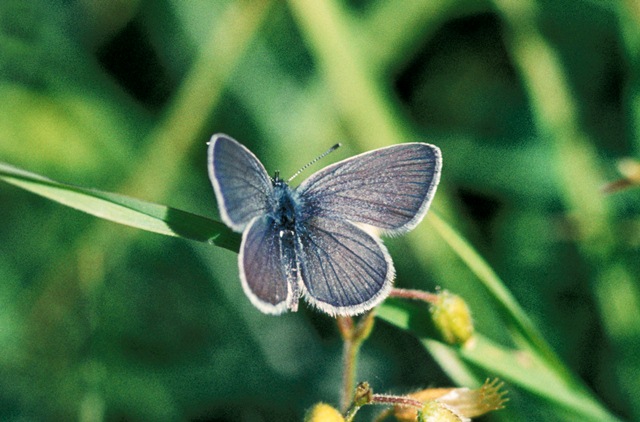 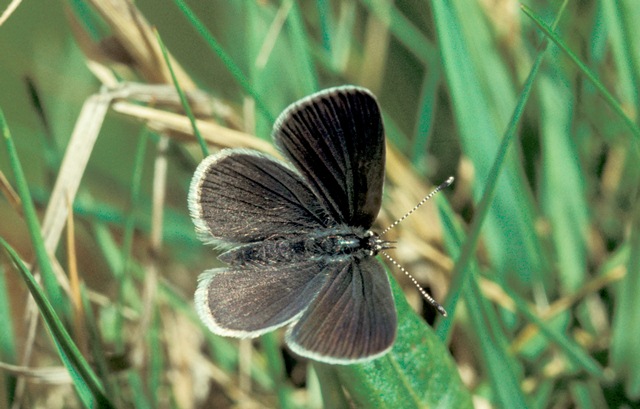 
Photographs: Frits Bink ©.
Very small, wing length 11 (10-12) mm. In the Benelux, this species inhabits Luxemburg and Wallonia in dry and warm grassland where its host-plant kidney vetch (Anthyllus vulneraria) is present. In the Netherlands it is irregularly present on a few sites in South-Limburg; however, in the Eifel it is locally common.
Butterfly is on the wing from mid-May until mid-August and peaks in early-June. The species is known from maritime and severe continental climates, amplitude 4 to 20.
Required heat sum 300°d and maximum tolerated 1500°d, corresponding climate windows 13 and 33 weeks.
In western Europe the only host plant is Anthyllus vulneraria, a species that occurs in chalk grassland. This plant occurs in local varieties differing in their flowering cycle. So the butterfly’s phenology differs from place to place and may have a successful second brood.
Ecological characteristics
Behaviour over time
Overwintering: fully grown larva in wilted flower head or in the litter layer.
Reproduction: oviposition after 3-4 days when the body contains 48 (42-54) eggs, estimated potential production 1.7 times as much.
Larval feeding periods: four weeks in period from May until early-August.
Generations: one, sometimes followed by a partial second.
Spreading of risk: variable phenology.
Life cycle: egg 4 (3-7) days; larvae 23 (18-27) days or between 36 and 48 weeks in the case of overwintering; pupa about 15 days.
Life span of adult: very short, 1 week.
 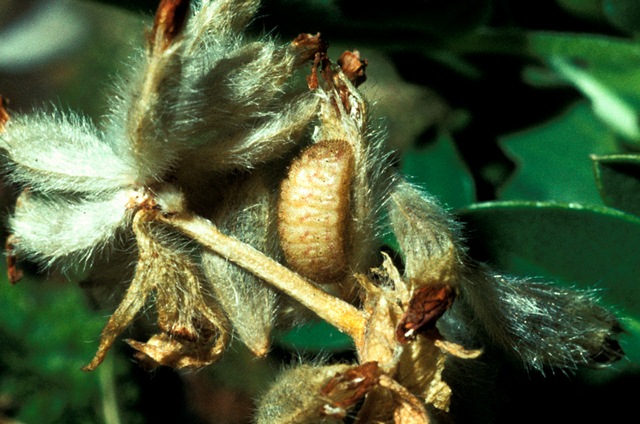
Photographs: Frits Bink ©.
Behaviour in space
From stay-at-home to migrant: stay-at-home, spatial requirement very modest.
Finding a mate: male perches, however sexes meet each other easily because the butterflies are colonial.
Orientation in the landscape: short grassland with kidney vetch.
Oviposition: egg is put deeply into a young flower head.
Defence
Threats from other organisms: little risk when the larva lives inside the flower head.
Myrmecophily: larva has some organs but unlikely useful because of its hidden lifestyle.
Threats from the environment: the short lived butterflies are vulnerable.
Feeding habits
Adult: nectar of small flowers but there is little feeding activity.
Larva: feeds inside the pod on the unripe seed and is cannibalistic when there is more than one larva per flower head.
Larval foodplants
Plant species: Fabaceae: Anthyllis vulneraria.
Journal
Rearing experiment based on specimens from Eschweiler, Eifel, Germany:
18 June 1983: fresh eggs collected.
23 June: larvae at end of first instar.
3 July: larvae in last instar.
13 July: larvae fully grown.
19 July: larvae in diapause.
Overwintered in fridge.
8 February 1984: taken out of the fridge.
21 March: first larva crept around.
14 April: after spraying with water the larva swelled up.
23 April: adult appeared.
13 May: second larva crept.
2 June: larva had moved again.
12 July: larva pupated.
Butterflies seen late in the season do not always represent a second brood but may originate from prolonged larval diapause.
Table 47-1. Results of dissections

Table 47-2. Collection and observation localities
Collection and observation localities:
B, Torgny 237 m, 49° 30’ 40”- 5° 29’ 04”E; 19 June 1983, 1 July 2002.
D, Blankenheim 50° 22’ 40”N – 6° 41’ 05”E; 20 June 1983.
D, Eschweiler 50° 47’ 09”N – 6° 16’ 37”E; 18 June 1983.
D, Lorch 300m, 50° 02’ 05”N – 7° 47’ 56”E; 14 June 1985, 31 July 85, 26 May 86.
D, Staffelstein 50° 05’ 32”N – 11° 01’ 25”E; 16 June 1985.
DK, Frøstrup 57° 05´ 48”N – 8° 52´ 54”E; 13 June 2004.
DK, Lundby 56° 55’46”N – 9° 29’ 43”E; 8 July 2005.
DK, Ørnhej 56° 13´ 06”N – 8° 34´ 00”E; 13 June 2004.
F, Aurel 400 m, 44° 43’N – 5° 16’E; 29 August 1984, 2 September 1984.
F, Cap Blanc-Nez 30 m, 50° 55’ 37”N – 1° 42’45”E; 1 September 1999, 10 June 2000.
F, Montmédy 217 m, 49° 31’ 07”N – 5° 21’ 33” E; 18 August 1984.
F, Lorraine, Lion-devant-Dun 300 m, 49° 23’ 40”N – 5° 14’ 03”E; 11 July 1984.
F, Vosges, Bollenberg 363 m, 47° 56’ 54”N – 7° 15’21”E; 11 June 1984.
S, Gotland, Ljugarn 57° 22’ 03”N – 18° 41’ 31”E; 24 June 2004.
S, Gotland, Russväter 57° 23 29”N – 18° 43’ 36”E; 21 June 2004.
S, Öland, Stenåsa 56° 32’ 44”N – 16° 36’ 43”E; 7 July 1982.
Fig. 47-1. Cupido minimus, phenogram adapted from Fichefet et al. 2008: 103.

Fig. 47-2. Cupido minimus, habitat characteristics.
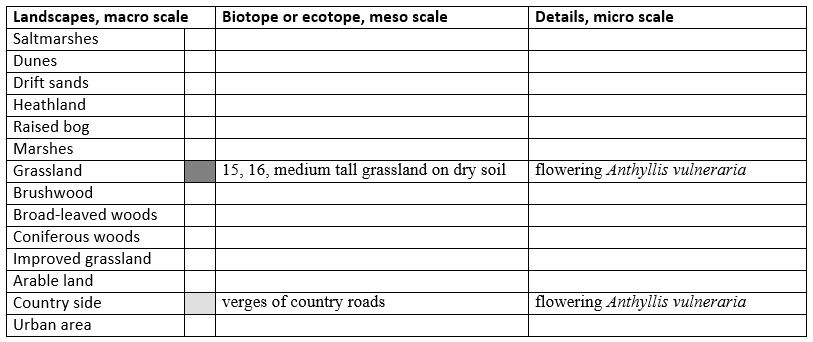
Fig. 47-3. Cupido minimus, climate matrix, heat-sums 300 - 1500°d.
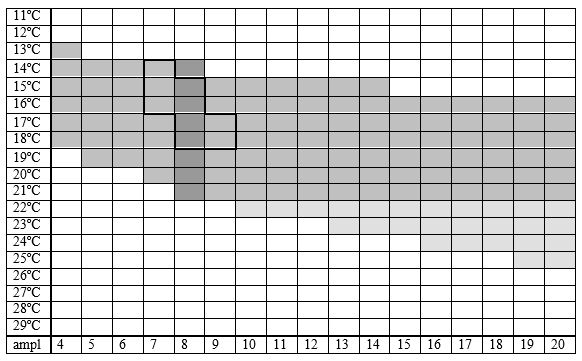
|










